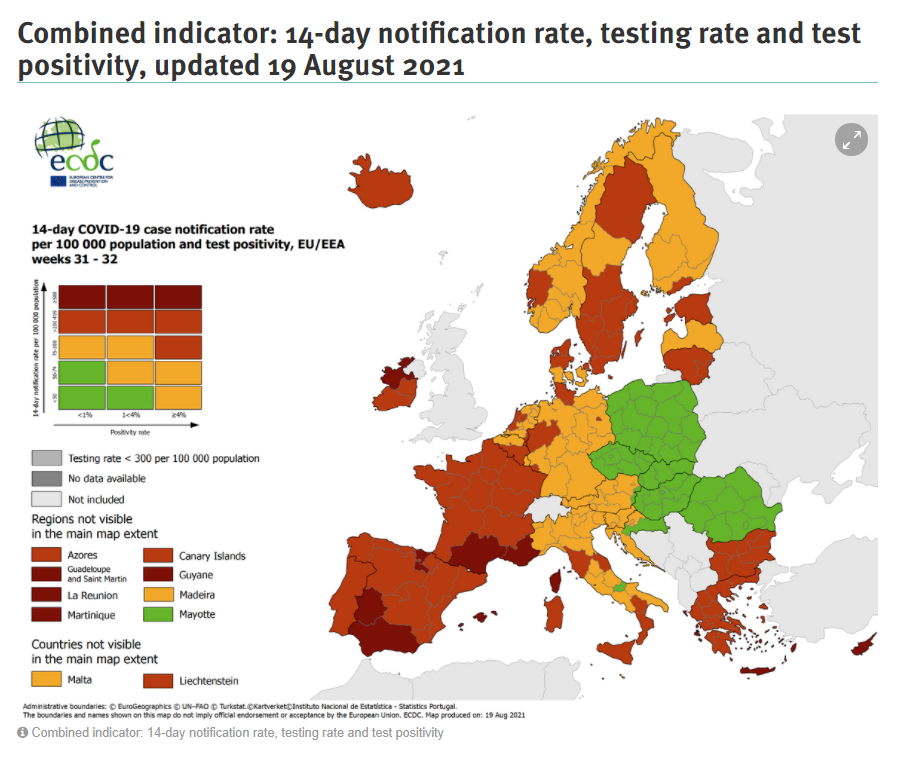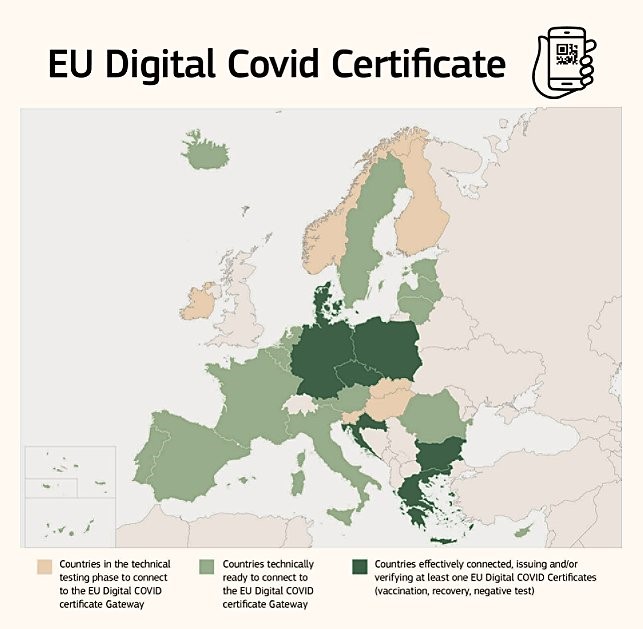EU Digital Covid Certificate
A solution to reopen Europe
In this data story, we look back on the developments that led to the establishment of the Digital Covid Certificate, and on how sharing of minimal data allowed us to regain freedom of movement.
How did COVID-19 impact freedom of movement?
Freedom of movement and residence for persons is one of the cornerstones of European Union citizenship, established by the Treaty of Maastricht in 1992. Since then, internal borders gradually faded and free movement of goods, services, and people became part of everyday life.
Yet, to slow down the spread of coronavirus and protect the health and well-being of all Europeans, some travel restrictions were necessary. The European Commission together with Member States, implemented containment measures, restrictions on non-essential travel, closing of borders, and/or reinstated internal border controls within the Schengen area.
In October 2020 the European Council agreed on common criteria and a common framework on travel measures in response to the COVID-19 pandemic1. EU countries are categorised in four levels of risk: green, orange, red or dark red, as shown in the figure by the European Centre for Disease Prevention and Control below. The categories depend on several factors, such as the number of cases and tests, the vaccination uptake, and the prevalence of virus variants. The framework helps Member States take decisions based on the epidemiological situation on a national and regional level.

Figure 1. Colour-coded map of combined indications2
Restricting travel has a serious impact on our day-to-day life and on the European economy. Tourism for example, is a source of employment for many Europeans and the total annual value of tourism is estimated at 787 billion euros3. In a normal summer season (pre-Covid), EU residents made more than 250 million tourism trips to destinations in the EU, during which they spent nearly 110 billion euros4. This dropped by 52 % as 1.5 billion fewer nights were spent in tourist accommodations in 2020 compared to 20195.
With vaccination programs in place and testing facilities established throughout Europe, hope amongst EU citizens to travel again sparked.
How can we make free movement inside the EU possible again?
In March, the President of the European Commission, Ursula von der Leyen, announced the creation of a system of “Digital Green Certificates”. The aim of the certificates – now called EU Digital COVID Certificate – was to reopen the EU6 and to make free movement again possible for EU citizens who are vaccinated against COVID-19, received a negative test result, or recovered.
On the 1st of June, the EU Digital Covid Certificate Gateway was launched. It serves as a verification tool for the EU COVID-19 certificates in a secure and privacy-friendly way. From the very start, seven countries (Bulgaria, Czech Republic, Denmark, Germany, Greece, Croatia, and Poland) were connected to the gateway. Gradually the other EU countries joined.7

Figure 2. Snapshot of the progress of the implementation of the EU Digital Covid Certificate on the 1st of July 20218
The system became operational on the 1st of July, when the “EU Digital COVID Certificate Regulation”, or EUDCC, entered into force9. From that day, EU citizens and residents were able to have their Digital COVID Certificates issued. The service is provided by the national authorities, free of charge and recognised in all 27 EU Member States, as well as in Iceland, Liechtenstein, Norway, San Marino, Switzerland, and Vatican City10.
In the interest of the citizens’ privacy, the authorities operating the programme and the software applications used to validate the certificates make so that the data read from the certificate is not stored nor retained following verification through the QR code or through a human check.
Thanks to the Digital Covid Certificate, freedom of movement within the EU has been re-established. This example clearly illustrates how powerful data can be. By collecting and sharing just a limited number of data, travel is again possible.
Discover the power of this data yourself on data.europa, where it is made available to all after anonymisation and aggregation. These data will provide you with insights as to how many certificates are exchanged per country. In addition, you can use the data and open-source code to build new and innovative applications.
Did you use the data to build something new or for research? Tell us your story!
Follow updates on Twitter, LinkedIn or via our newsletter.
